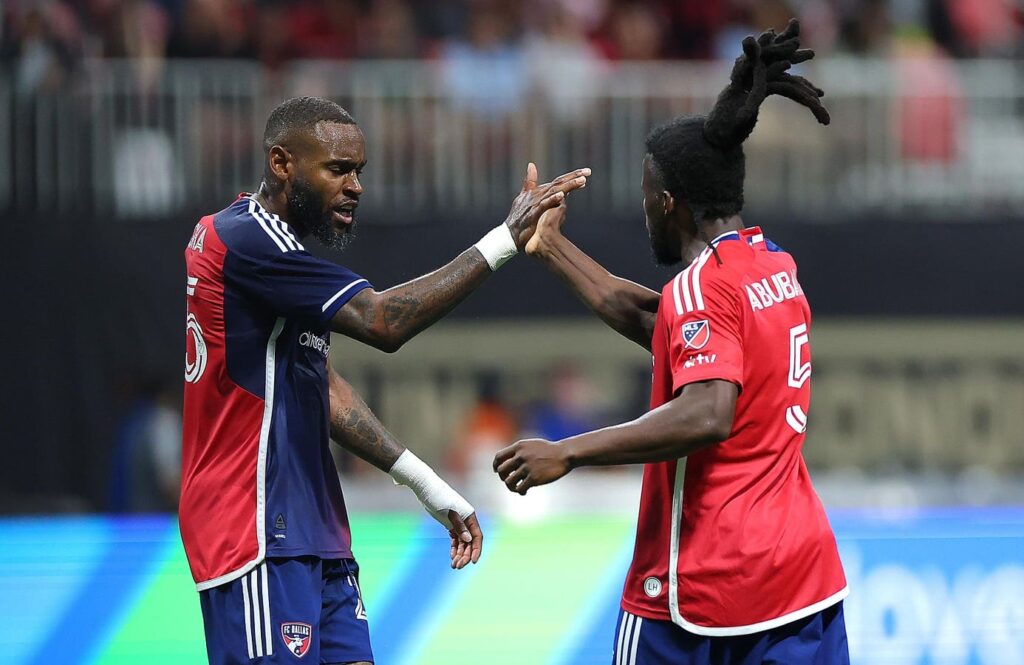Sebastien Ibeagha, left, and Lalas Abubakar of FC Dallas react after a 1-1 draw against Atlanta … More
On Tuesday, FC Dallas announced it had become the second MLS club to reach a tape-delay match broadcast agreement with a local TV channel, after Charlotte FC .
Under the agreement, FC Dallas games will be shown a two- or three-day lag over the air on KDFI More 27, a sister station of local Fox affiliate KDFW. While AppleTV still holds exclusive live streaming rights over every MLS regular season, Leagues Cup and MLS Cup Playoff match, clubs are permitted to reach such tape delay pacts with local channels so long as the broadcasts are delayed at least 48 hours.
At first, this might seem like a trivial measure. But in terms of generating exposure, it could actually be a brilliant move.
In the digital era where it’s nearly impossible to avoid news about a team you care about for 48 hours while waiting for a tape delay, there are two kinds of viewers who will be most attracted to these broadcasts
- Diehard fans who either attended the matches in person and want to see themselves on TV, or who want to relive a particularly enjoyable outcome.
- Casual TV viewers (including those who don’t have cable) who are flipping channels looking for something interesting to watch – or even have in the background – on a random Tuesday night.
A Better Deal?
And in terms of growing a regional brand, the importance of the second cohort of viewers can’t be overstated. It’s casual interest that determines whether a club receives local media coverage, whether a team sells out 100% of its tickets compared to 85%, and whether it succeeds in mearchandising and/or local political endeavors and so on.
There’s a genuine argument to be made that having games on in tape delay on a weeknight, when potential casual viewers often do not have other plans and are far more likely to be at home, might provide more bang for the buck than the live local agreements MLS clubs held prior to the league’s relationship with Apple.
While live local broadcasts may have been appointment viewing for hardcore fans, they typically came in Saturday night windows from March through October that are notoriously bad for doing strong TV numbers.
And because the games were on Saturday nights – against other more popular TV sports properties, particularly college football in the late summer and early fall — most local clubs were limited to agreements with a regional sports network with less distribution than an over-the-air channel. (There were exceptions, such as the Philadelphia Union’s former relationship with PHL17).
Generating Curiosity
Additionally, because the FC Dallas and Charlotte FC games are direct reboradcasts of the live product shown on Apple TV’s MLS Season Pass, the production quality should exceed what was previously available through a regional sports network for, in many cases, that channel’s third- or fourth-most popular property.
That production level is also critically important because of what should be the central purpose of these broadcasts: To showcase and event and an environment that looks worthy of attention. The chief concern for clubs striking this agreement should be whether the stadium atmosphere through the television is one that makes a casual viewer say “hey, this looks cool, I should go to an MLS game sometime.”
No one is saying this is suddenly going to turn FC Dallas into the Dallas Cowboys among Metroplex sports fans. But there is reason to believe this will be fruitful for the club, and perhaps also for a broadcaster that is often reduced to syndicated sitcom or drama reruns most weeknights. Expect teams to follow the examples of Charlotte and Dallas.
Read the full article here
